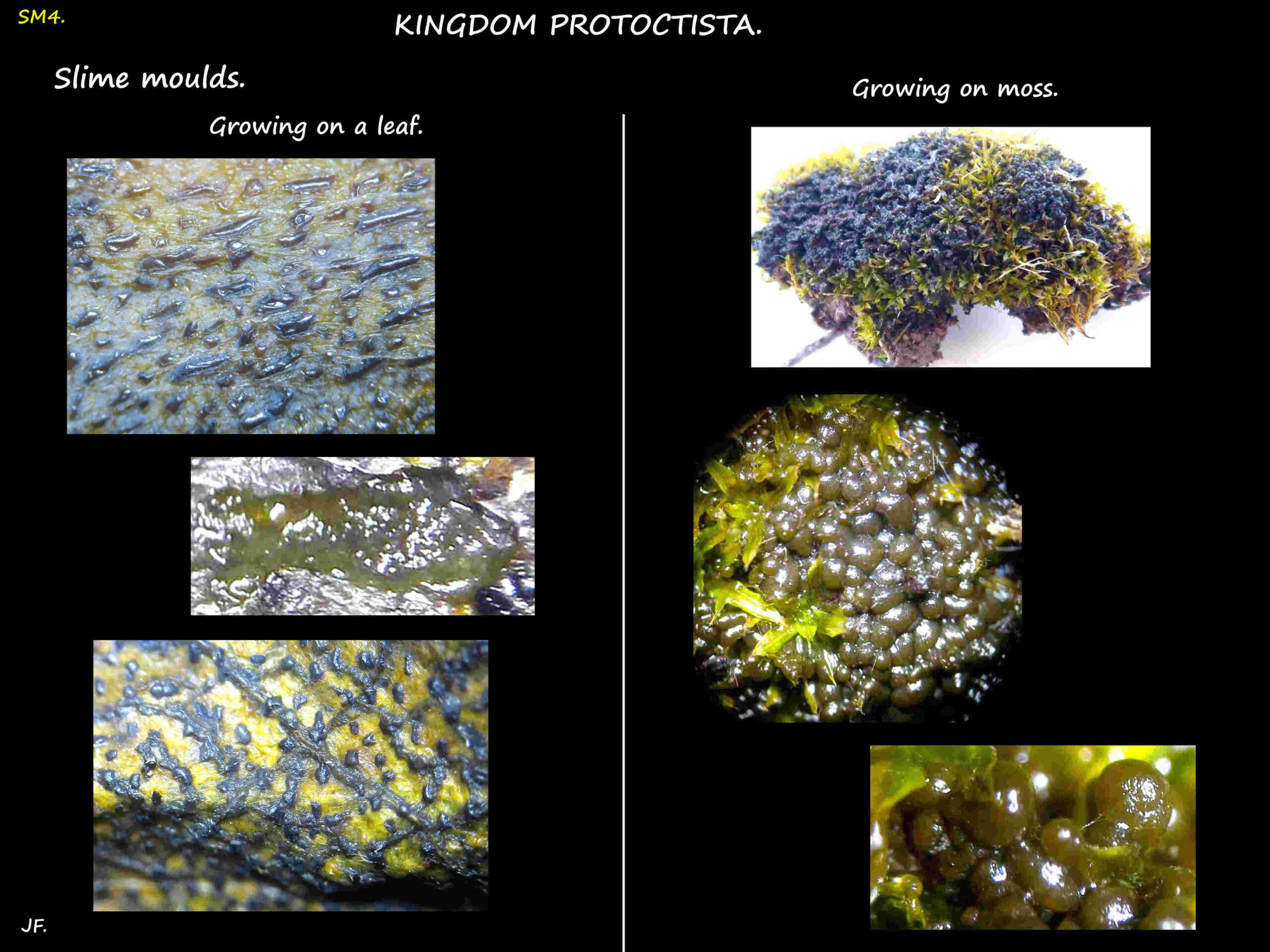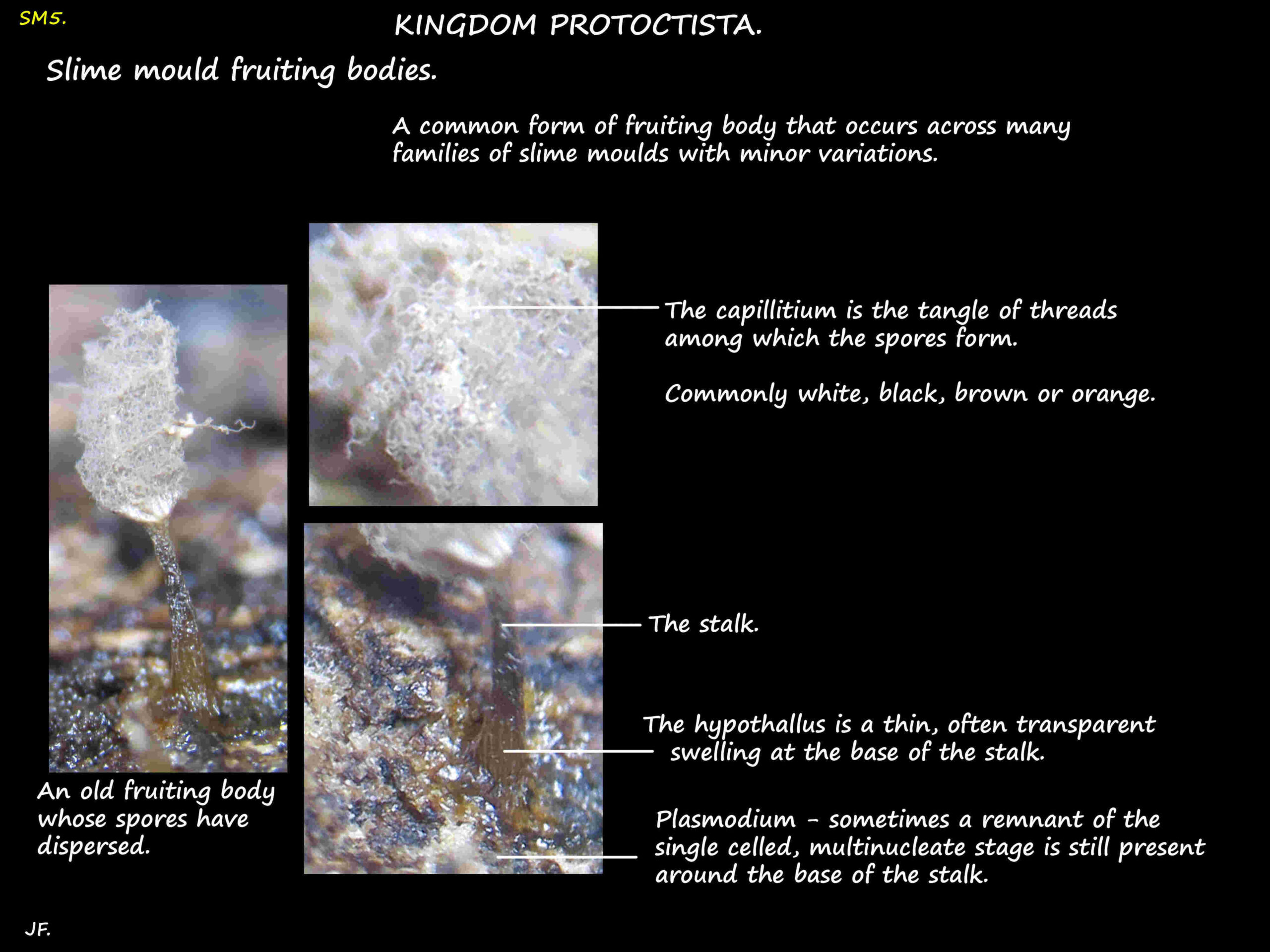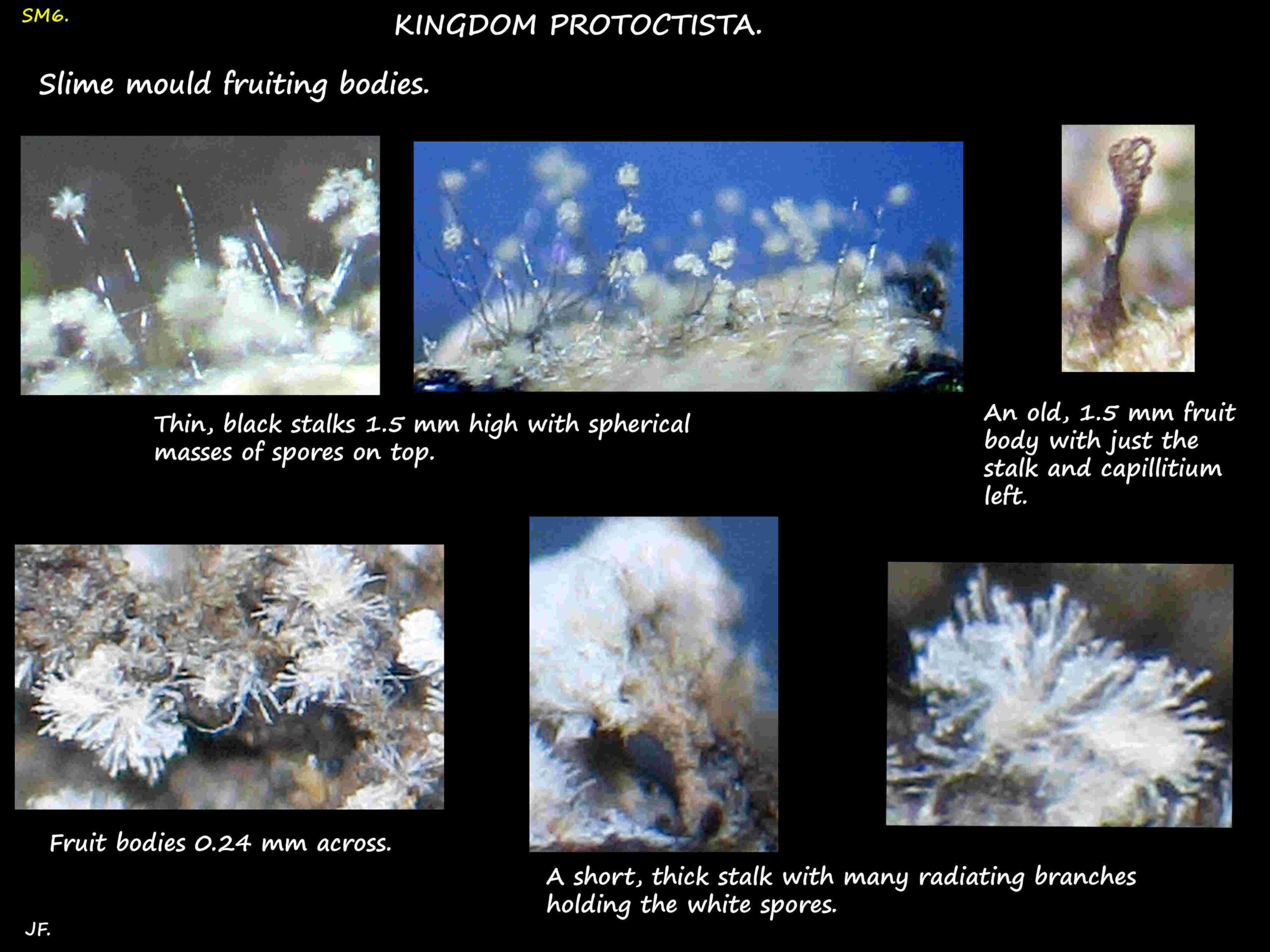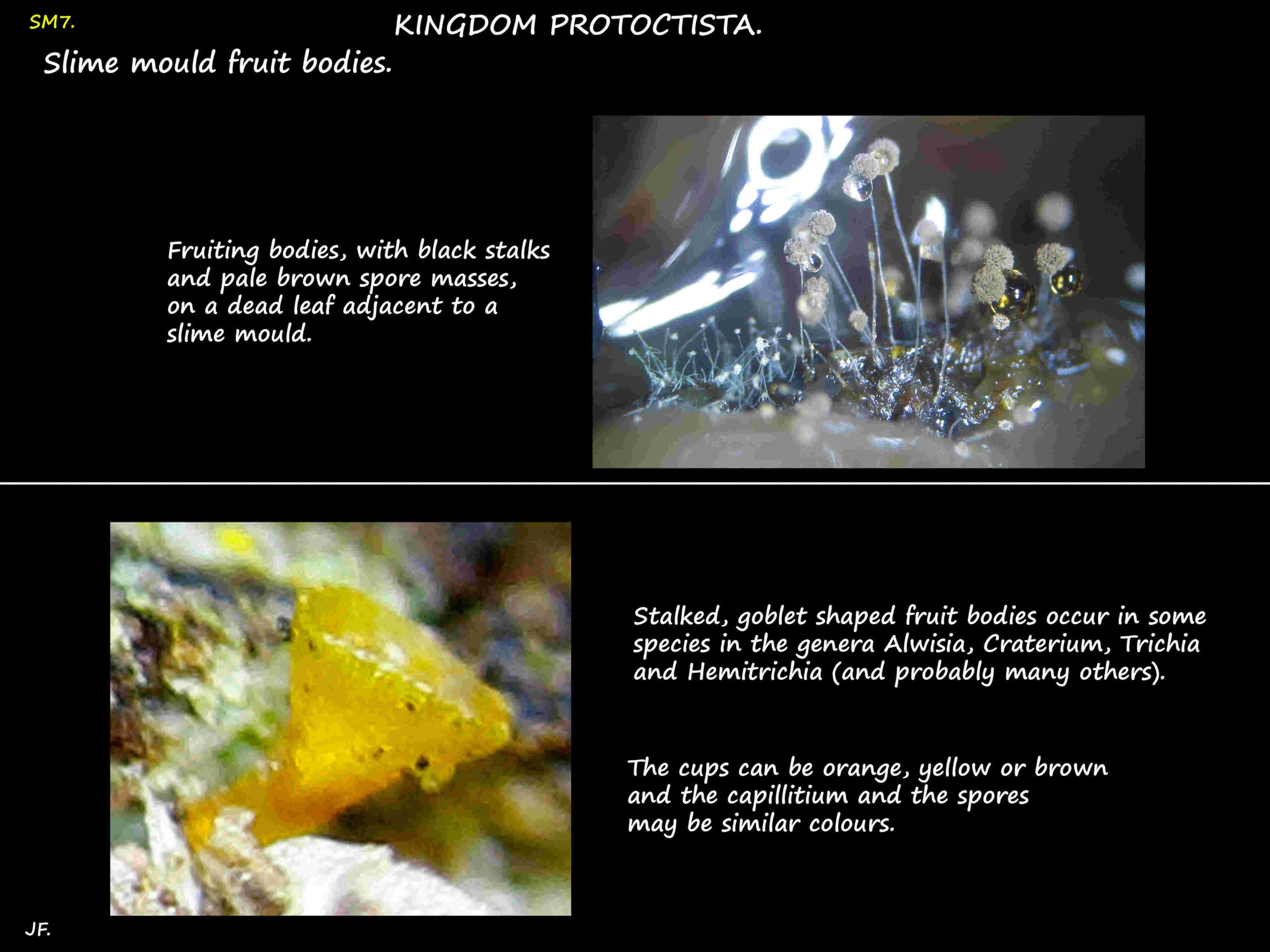Slime moulds.
“Slime mould” is an informal name for several types of eukaryotes grouped together for convenience.
They can live as single cells but can also join together to form multicellular reproductive structures.
The slime moulds, previously classified as fungi, are now placed with the amoebas and similar organisms which
move, and obtain food, by putting out pseudopodia (false feet).
Classification of the slime moulds is not settled and names and ranks vary between authors.
There are 2 main groups:
1. Plasmodial, acellular or syncitial slime moulds – the Myxogastria or Myxomycetes.
These are the most numerous and frequently seen slime moulds.
2. Cellular slime moulds – the Dictyosteliomycota.
The Protosteloids, a mixed group, have characteristics intermediate between the above.
Plasmodial slime mould.
This is a single, very large cell or plasmodium that contains thousands of individual nuclei,
has a thick, slimy appearance and may be transparent or variously coloured.
Most are very small but some can grow to a metre.
They feed like an amoeba by putting out pseudopodia to engulf food (phagocytosis).
When conditions become harsh the plasmodium forms fruiting bodies.
The fruiting bodies are only a fraction of a millimetre up to 2 mm tall.
The spores released by the fruiting body later germinate, fuse and divide by mitosis to form another large, multinucleate plasmodium.
There are up to about 1000 species in 14 families and 62 genera but only a few are commonly seen.
Cellular slime mould.
These exist for most of the time as an amoeboid-like, single nucleated cell.
In response to a chemical stimulus during harsh conditions, they group together and act as a single, slug-like organism
(a pseudoplasmodium), forming a fruiting body containing spores, usually on a stalk to help their dispersal.
Their main food source is bacteria but also fungi and yeasts living on dead plant material.
They are found in soil, leaf litter, mulch or on logs and can move up to a couple of millimetres an hour in search of food.
Identification is largely based on the appearance of the fruiting body and spores.
The fruiting bodies of the myxomycetes may vary depending on conditions.
They may be stalked or sessile, solitary or grouped, and in a great variety of shapes and colours.
Shapes include balls, sausages, miniature trees or mushrooms etc.
J.F.





